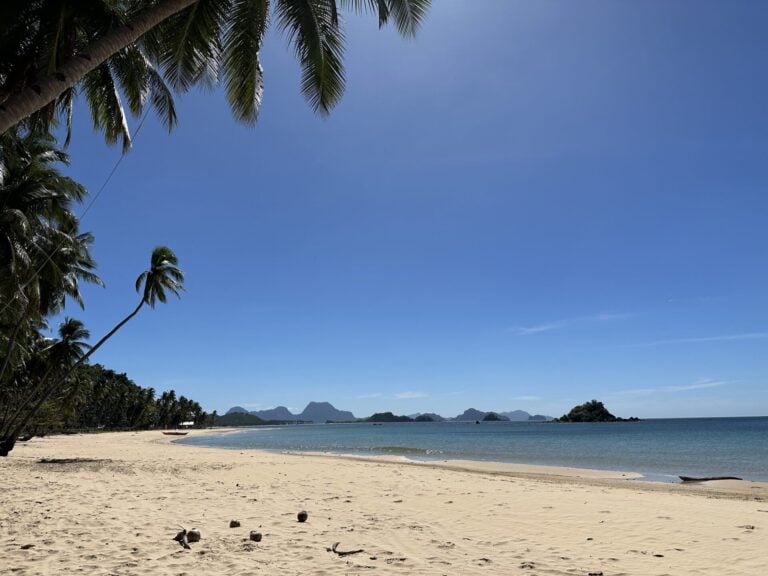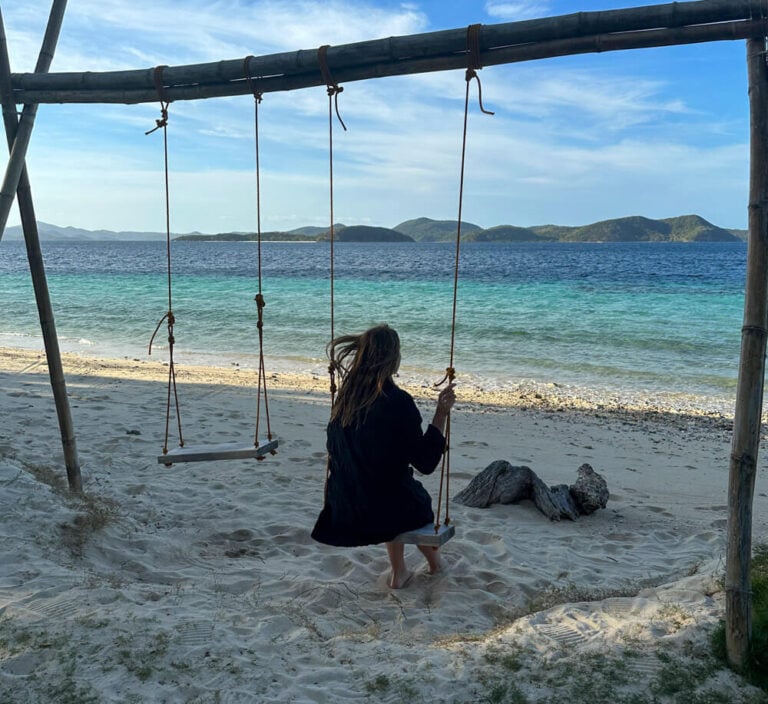13 Tips for Your Backpacking Trip to the Philippines
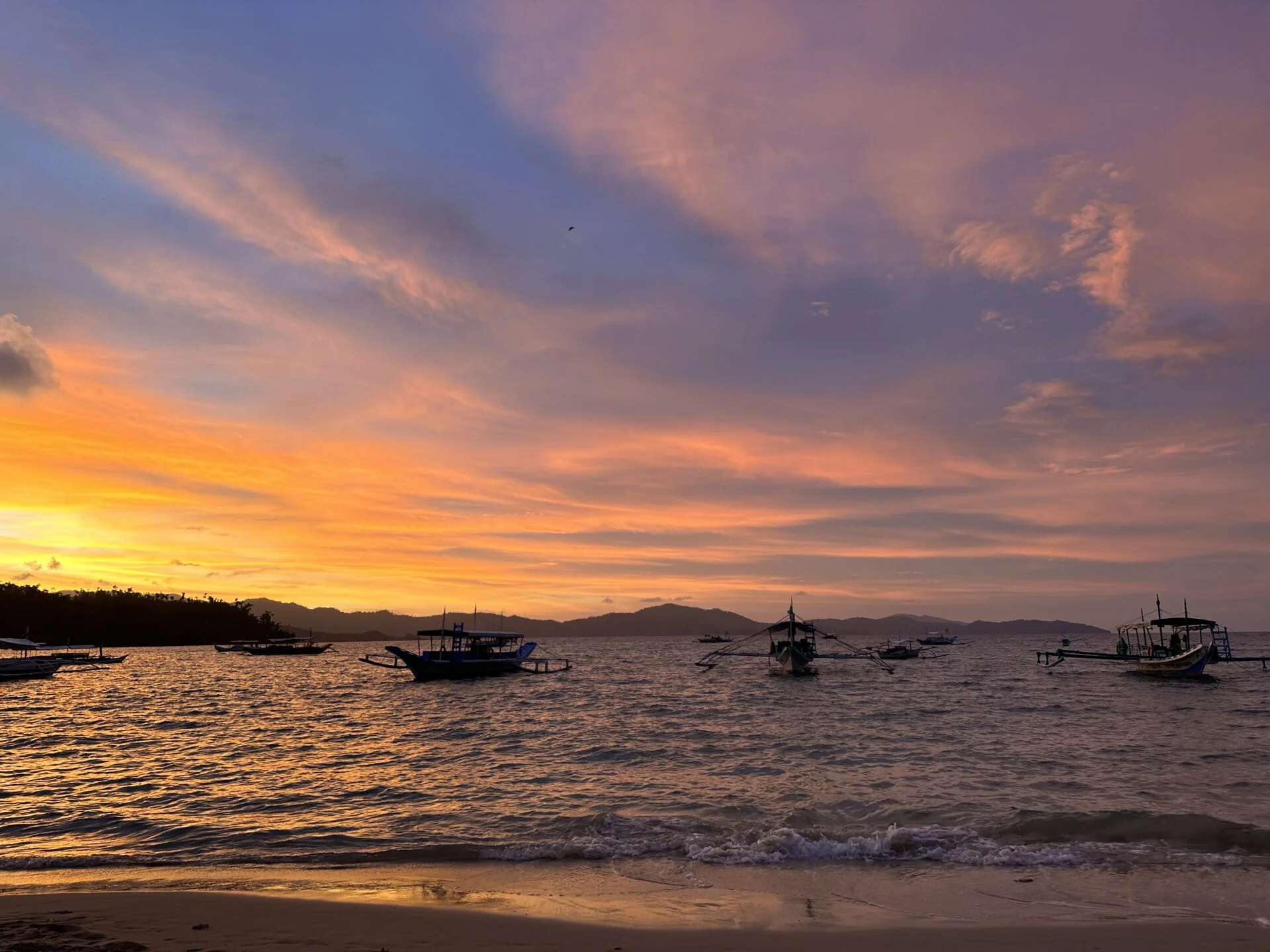
The Philippines is drawing more and more visitors every year and for good reason. It’s one of the most beautiful places on earth with its stunning scenery, colourful marine life and breathtaking beaches. It’s truly a great destination for all travellers, whether you’re travelling in luxury or backpacking around the islands.
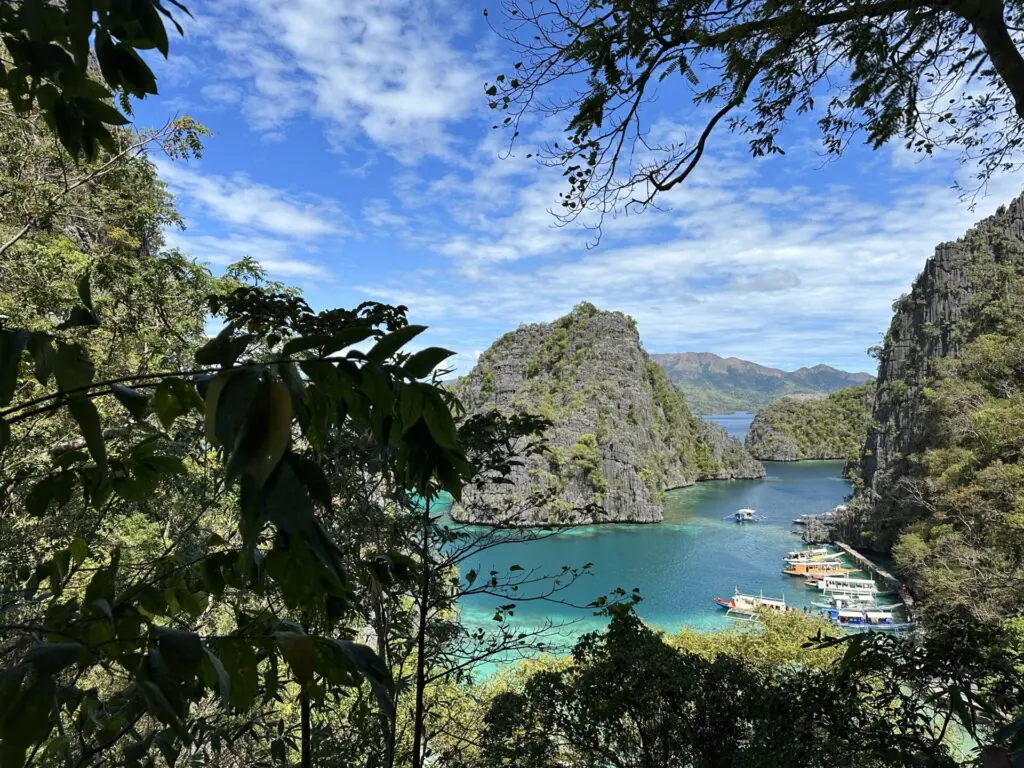
Despite the country growing in popularity, the infrastructure for backpackers doesn’t quite match that of Thailand or other south-east Asian neighbours. To be fair, it’s HUGE, it’s made up of over 7,100 islands and so much of the transport relies on good weather to operate. This means it takes a bit more planning to travel around the Philippines. Turning up with an idea of where you want to go but nothing booked sadly doesn’t always work here.
I loved the month I spent backpacking in the Philippines. It’s my favourite place I’ve visited in Asia (so far). I’ve written the tips below to help you plan your trip and make sure it’s as smooth sailing as possible.
Be sure to check out my suggested four-week backpacking route through the Philippines too.
Always carry cash
Most places we visited in the Philippines only accepted cash. In the cities or bigger towns, you may find it possible to pay with a card but there is often a surcharge. We even found some of our accommodations would only accept cash. Make sure you carry plenty with you. You can get some out at the ATM at the airport. ATMs were always accessible on the islands we visited.
Book ferries and flights in advance
The Philippines doesn’t quite have the same tourist infrastructure as other places such as Thailand. It’s a bit more difficult to get around and with limited options, things often book up in advance.
When it comes to flights, book these as early as you can to avoid high prices. For example, we booked our flight from Cebu to Coron two months in advance – the flight cost us £45 with luggage. We checked a few days before and the flight had almost tripled in price. It’s annoying having to commit to a route that early, but if you want to keep prices low it’s the only way.
For ferries, you can wait until a little bit closer. We were generally booking our ferries 5 days in advance so we could be sure of our plans. While we were in the Philippines, a lot of the El Nido/Coron ferries had been cancelled due to bad weather. This meant there was a huge backlog of people trying to get across and the ferries were sold out two weeks in advance.
Book hostels in advance
Like the above, hostels also need to be booked in advance. Many of the islands only have a small selection of budget accommodation such as hostels, and they fill up quickly, especially in the high season. I’d suggest booking at least 5 days in advance to ensure you get the spot you want. Even then, we found many of the options had sold out so if there’s somewhere you really want to stay, book it as early as you can.


Plan to be flexible
Not everything goes to plan in the Philippines. Almost everyone we met had a story to tell about cancelled transport or a day tour gone wrong. Don’t let this put you off, but plan to be flexible and allow for things to go wrong.
I’d suggest building in an extra day here or there to allow for catch-up when things haven’t gone to plan. After all, an extra day lying on a white sand beach can’t be THAT bad…
Don’t travel in the rainy season
The rainy season in the Philippines isn’t just a minor bit of rain that quickly blows over. It’s days and days of heavy rain and storm surges. Most of the boats are cancelled and you’ll find a lot of places closed. Avoid travelling between May and November to avoid the heavy rains. You won’t be able to see what the Philippines has to offer and you’ll likely find yourself stuck in one place.
Don’t book your day tours too far in advance
Before travelling to a new spot, it’s very tempting to look at day tours/activities online and book these in advance. When it comes to the Philippines, it’s far cheaper to sort this when you arrive. We saw tours in our hostels that were half the cost as advertised online. It also gives you chance to be more flexible. Maybe the weather will be unfavourable or you’ll change your mind about doing an activity.
If you’re unsure whether the agency you are booking with is safe, speak to your accommodation as they will know the trusted tour providers.
Know which island-hopping tours you want to do
The Philippines is known for its gorgeous islands and crystal-clear waters teeming with marine life. The main way to experience most of this will be through island hopping tours. Every single island we went to offered a variety of island hopping tours. We ended up doing tours in Bohol, Siquijor, Coron and Port Barton (as well as our island hopping between Coron and El Nido).
The cost of these tours quickly adds up -prices ranged from £25 in Siquijor to £45 in Bohol. I would personally research what each tour offers and decide what you want to do ahead of time. You don’t need to book the tour in advance, but at least have an idea of which islands offer what you want, especially if you are on a budget. My favourite island hopping tours were Coron and Port Barton. The Coron tour offers some stunning scenery. The Port Barton tour had some fantastic snorkelling and we even saw a turtle.
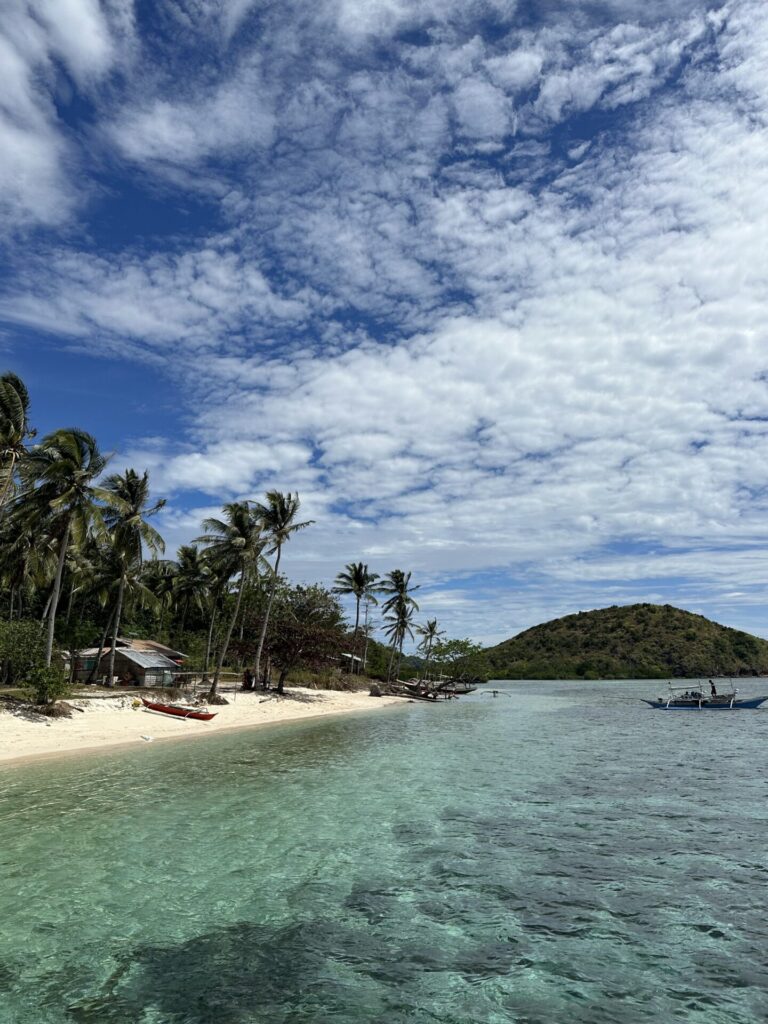

Take a reusable water bottle
Tap water isn’t drinkable in the Philippines but thankfully, every single accommodation we stayed at provided free filtered water. This isn’t the case in some countries such as Thailand where most budget accommodations won’t provide anything. Carry a reusable water bottle so you can keep it filled and avoid buying endless plastic bottles.
Have a waterproof cover for your backpack
The weather in the Philippines is very unpredictable. We visited in the “dry season” but it still rained quite a bit. You don’t want your backpack and everything inside of it to get soaked. Carrying a waterproof cover means you can protect your bag whenever it rains and you’re caught outside.
Your trip to the Philippines will also more than likely involve taking at least one or two boats. The bags are often kept outside and prone to getting splashed. You can use your rain cover to keep everything as dry as possible.

Consider taking water shoes
A big draw to the Philippines is its unbelievable ocean waters and unique marine life. No trip to the Philippines would be complete without a swim in its warm waters. Often the beaches are rocky and are home to those pesky Sea Urchins. If you step on one, it won’t be good. We also found a lot of the island hopping tours required us to have shoes to walk on the islands. I’d suggest buying shoes such as Tevas. They might not be the most fashionable accessory, but they will protect your feet. You can walk through the water with them and straight onto dry land without having to take them off.
Note: please don’t walk on corals. I saw so many people wearing water shoes trampling all over the coral. This can cause permanent damage. Coral can also be sharp and your shoes may not fully protect you.
Download the app Grab to your mobile phone
Grab is very similar to Uber and can be used to order taxis. It won’t be available everywhere in the Philippines, but it’s used in the major spots such as Manila and Cebu. It tends to be cheaper than hailing a regular cab and can also be safer as your journey is being tracked.
I’d suggest downloading the app before arriving in the Philippines and getting everything set up. That way you can use it straight away once you’re at the airport.
Try the local food
The Philippines isn’t exactly famous for its food. In fact, we met travellers who told us they’d struggled to find restaurants to eat at. We didn’t have this problem and always found something delicious to try. Most of the islands offer a variety of cuisines but we often enjoyed some of the local dishes. Here are some I’d recommend:
- Silog: this is a popular savoury breakfast in the Philippines. It’s garlic fried rice with runny eggs. It is often paired with your choice of meat.
- Lumpia: this is a type of spring roll stuffed with vegetables or meat. We found it was often served with noodles. It was one of my favourites.
- Chicken Adobo: the chicken is slow-cooked with SO MUCH flavour. We had this a few times and always enjoyed it.
- Sisig: there are several different varieties of this which involve different meat. Traditionally pork is used and cooked with lots of spice.
- Mango float: this is a traditional Filipino dessert. It consists of condensed milk layered with crackers and fresh mango. It sounds odd but it’s delicious and worth trying.
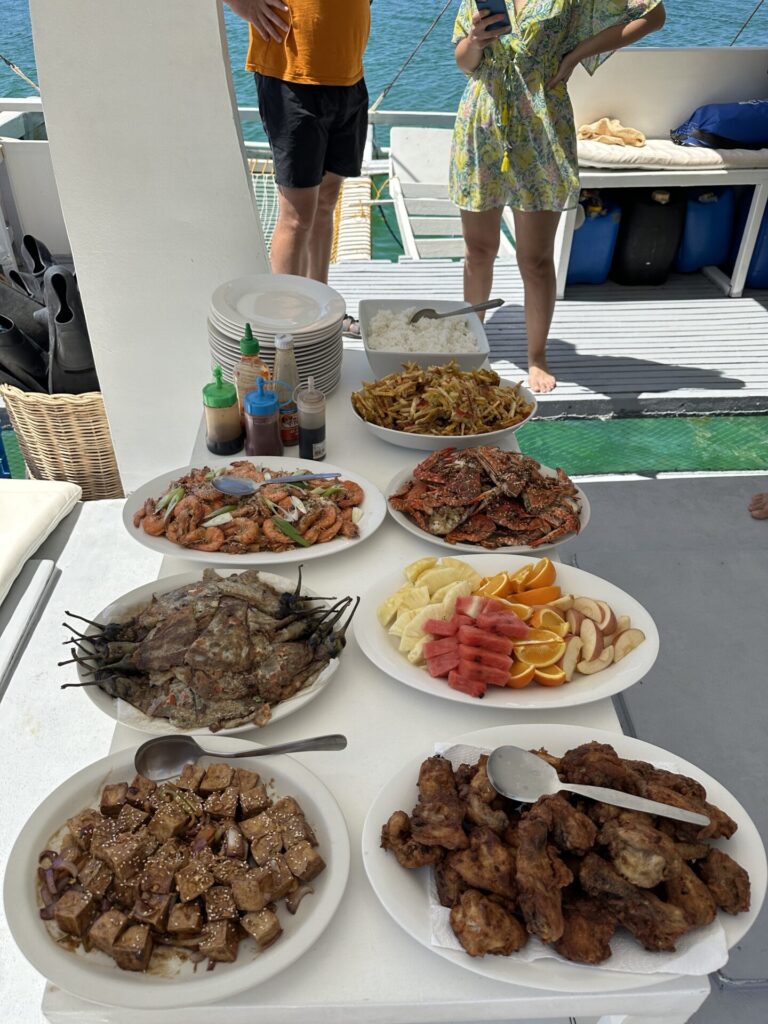
Research any attraction which involves animal encounters
We found many of the attractions in the Philippines which involved animal encounters did not abide by any animal welfare standards. This was particularly true for Bohol where the Tarsier “sanctuaries” are anything but sanctuaries.
The Philippines is also famous for swimming with whale sharks in Oslob. This is an unethical activity and is causing major harm to the local whale shark population. They feed and touch the fish and have no issue with you doing the same. If you’d like to swim with whale sharks (who wouldn’t), I’d suggest looking at Southern Leyte or Malapascua.
If animal welfare is something that is important to you, I’d advise checking with your tour operator about any animal encounters they are providing. For example, in Bohol, we were taken to a “python viewing centre”. We had no idea what it was and I was sick to my stomach when I saw the conditions these animals were kept in. I’m not sure I’ve ever seen such poor animal welfare standards in my life. It’s worth double-checking with whoever is providing your tour before travelling.
Check out my full guide for backpacking in the Philippines.

